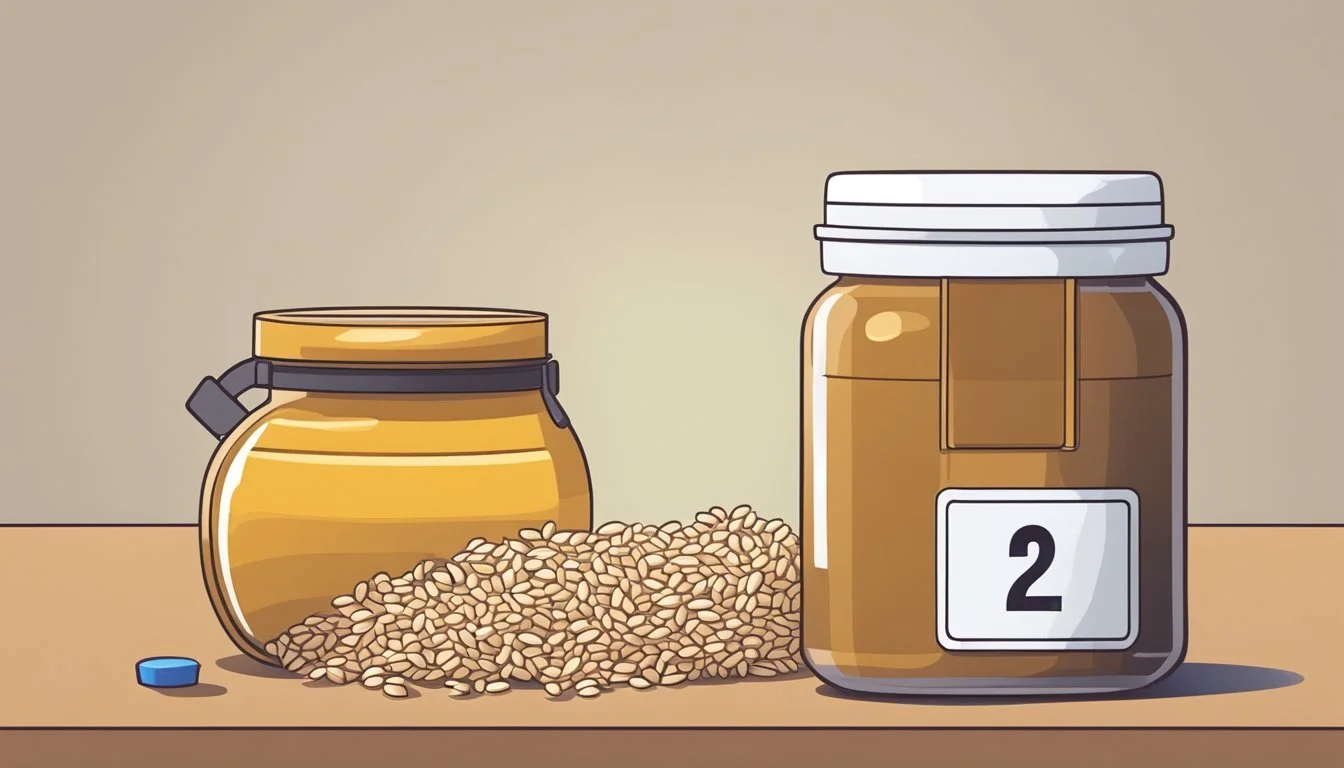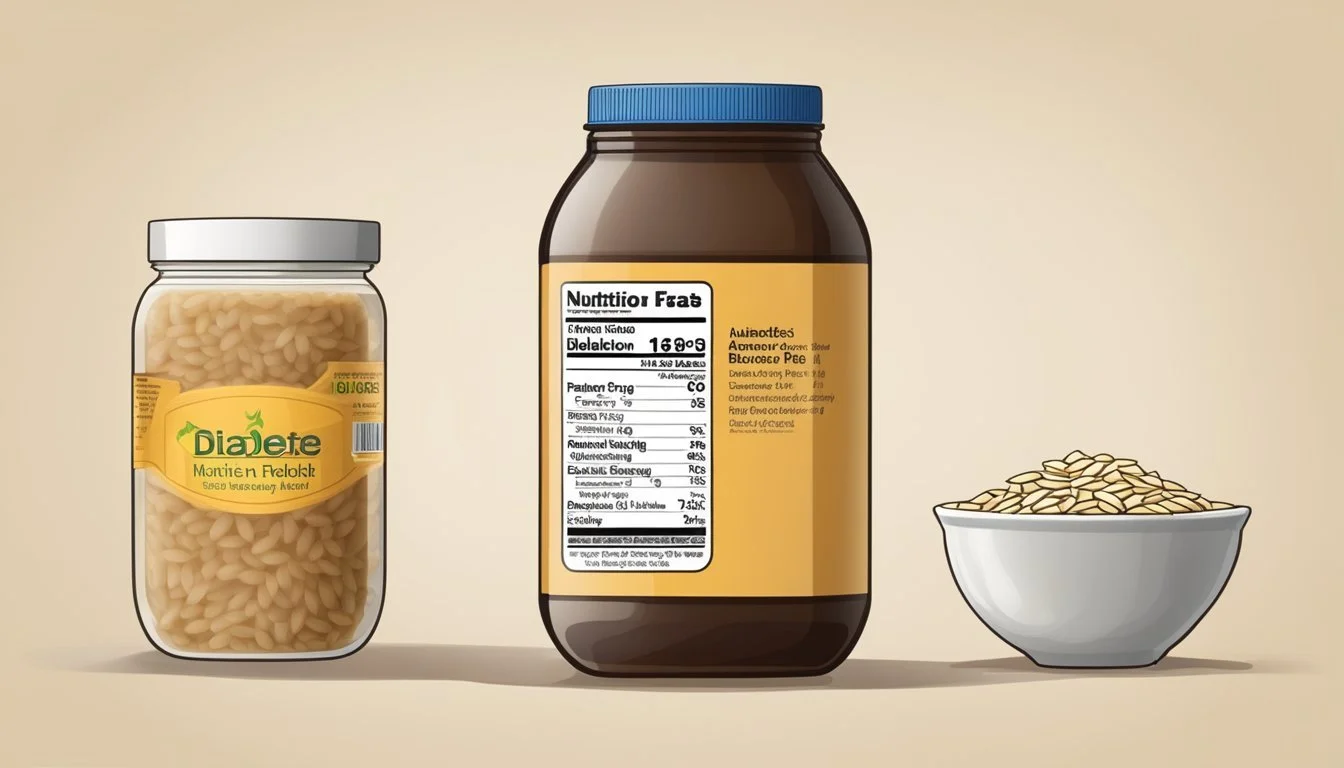Can Diabetics Eat Brown Rice Syrup?
Understanding Its Impact on Blood Sugar
Brown rice syrup, a sweetener derived from brown rice, often comes into question for individuals managing diabetes. Many wonder if it could be a suitable alternative to other sweeteners. The primary concern with brown rice syrup is its high glycemic index, which means it can cause rapid spikes in blood sugar levels.
For those with diabetes, maintaining stable blood sugar is crucial for overall health. Brown rice syrup's impact on blood glucose can make it a less favorable choice compared to other low glycemic sweeteners. Despite its appealing natural origin, the glucose molecules in brown rice syrup can contribute to elevated blood sugar, challenging diabetes management.
Given these considerations, individuals with diabetes are generally advised to seek out alternative sweeteners that have a more minimal impact on blood sugar levels. Understanding the potential effects of brown rice syrup helps in making informed dietary choices that support better blood sugar control.
Understanding Diabetes and Blood Sugar
Diabetes management involves careful monitoring of blood sugar levels and making dietary choices that support stable glucose levels. Key factors include the role of diet, understanding blood sugar, and the importance of the glycemic index.
Role of Diet in Managing Diabetes
Diet plays a crucial role in managing diabetes, influencing how blood glucose levels fluctuate throughout the day. Carbohydrates are of particular interest since they directly affect blood sugar. For diabetics, choosing low glycemic index (GI) foods can help prevent spikes in blood glucose. Balanced meals containing fiber, protein, and healthy fats can mitigate the impact of carbs on blood sugar levels.
Monitoring carbohydrate intake is essential. Diabetics often track their carbohydrate consumption to manage insulin requirements and ensure that blood glucose remains within target ranges.
Blood Sugar Fundamentals
Blood sugar, or blood glucose, is the sugar that circulates in the bloodstream, providing energy to cells. The body regulates blood sugar through the hormone insulin, produced by the pancreas. In diabetic individuals, this regulation is impaired. Type 1 diabetes involves the body not producing insulin, while Type 2 Diabetes is characterized by insulin resistance.
Maintaining optimal blood sugar levels is critical to prevent complications. For diabetics, regular monitoring using devices like glucose meters is standard practice. This frequent monitoring allows for adjustments in diet, physical activity, and medications.
Importance of Glycemic Index
The glycemic index (GI) measures how quickly a carbohydrate-containing food raises blood glucose levels. Foods with a high GI cause rapid spikes, while low GI foods result in gradual increases. For diabetics, low GI foods are beneficial as they promote stable blood sugar levels.
Brown rice syrup, for example, has a lower GI compared to regular sugar, implying a smaller immediate impact on blood sugar. This attribute makes it a potentially safer alternative for diabetics. However, portion control and monitoring are still necessary, as individual responses can vary.
In summary, diabetics must pay close attention to their diet, understand how different foods affect blood glucose, and prefer low glycemic index foods to manage their condition effectively.
Nutritional Profile of Brown Rice Syrup
Brown rice syrup is a sweetener derived from brown rice that primarily consists of carbohydrates, predominantly in the form of sugars such as maltose and glucose. Its high glycemic index and calorie content are critical aspects to consider, especially for diabetics.
What Is Brown Rice Syrup?
Brown rice syrup is made by enzymatically breaking down starches in brown rice. The resulting liquid is boiled down to produce the syrup. Per 100 grams, it contains about 311 calories. It has minimal protein (0.5 grams) and fats (0.2 grams).
The syrup is composed mainly of carbohydrates, around 77.0 grams, with sugars such as maltose being the most prevalent. Maltose and smaller amounts of glucose contribute to its sweetness. It lacks fructose, unlike many other sweeteners.
Comparison with Other Sweeteners
When compared with table sugar and high-fructose corn syrup, brown rice syrup has a higher glycemic index, approximately 98 out of 100. This means it causes rapid spikes in blood sugar levels.
Nutritional Content per 100g:
Sweetener Calories Carbs (g) Sugars GI Brown Rice Syrup 311 77.0 Mostly maltose 98 Table Sugar ~387 ~100 Sucrose 60-70 High-Fructose Corn Syrup ~281 ~76 Glucose & fructose 62
Brown rice syrup's high carbohydrate and sugar composition, primarily maltose, differ from others like table sugar, which comprises sucrose. This makes it less ideal for diabetics due to potential blood sugar spikes.
Brown Rice in the Diabetic Diet
Brown rice is a whole grain that can offer several benefits for diabetics due to its fiber content. This section examines its glycemic index, effects on blood sugar regulation, and portion control.
Glycemic Index of Brown Rice Syrup
The glycemic index (GI) of brown rice syrup is relatively high. Foods with a high GI can rapidly raise blood sugar levels. Given its carbohydrate content, brown rice syrup has the potential to cause quick spikes in post-meal blood sugar.
Brown rice on its own generally has a lower GI compared to refined grains. This makes it a preferable option for managing hemoglobin A1c levels, a key indicator in diabetes management.
Effects on Blood Sugar Regulation
Brown rice contains significant fiber, which can help moderate blood sugar levels. In contrast, brown rice syrup lacks this benefit due to its processing.
For diabetics, consuming whole brown rice could support better blood sugar control compared to brown rice syrup. Moderating hemoglobin A1c levels is crucial, and foods high in fiber are beneficial for this purpose.
Portion Control and Diabetes Management
Portion size is critical when incorporating brown rice into a diabetic diet. Even though brown rice is healthier than refined grains, overeating can still cause blood sugar spikes.
A general guideline is to limit brown rice servings to ½ cup per meal. Combining brown rice with vegetables and lean proteins can slow carbohydrate absorption, leading to more stable blood sugar levels.
Managing portion sizes can significantly contribute to better post-meal blood sugar levels, providing a balanced approach to diabetes management.
Health Considerations of Sweeteners for Diabetics
The impact of sweeteners on blood sugar levels and overall health is crucial for diabetics. This section delves into nutrients, the risks of added sugars, and the comparison between natural and artificial sweeteners.
Nutrients and Mineral Content
Sweeteners can vary significantly in their nutritional profiles. Some, like brown rice syrup, are derived from whole grains and may retain certain nutrients, such as magnesium. However, the nutrient content of these sweeteners is generally lower compared to consuming whole foods.
Brown rice syrup, for example, contains minimal vitamins and minerals per serving. It's important for diabetics to monitor the intake of nutrients and opt for sweeteners that may provide additional health benefits, even if marginally.
Risks Associated with Added Sugars
Added sugars pose significant health risks for diabetics. They contribute to rapid spikes in blood glucose levels, which can be difficult to manage. High glycemic index (GI) sweeteners like rice syrup cause sudden increases in blood sugar.
Excessive consumption of added sugars can lead to weight gain and increased insulin resistance. Diabetics should be aware of the sources of added sugar in their diet and aim to minimize intake to maintain better blood sugar control and overall health.
Natural Sweeteners Vs. Artificial Sweeteners
Many natural sweeteners, such as stevia and monk fruit, offer sweetening options without significantly impacting blood sugar levels. These sweeteners typically have a lower glycemic index compared to traditional sugars. They can be beneficial for diabetics seeking to maintain stable glucose levels.
Artificial sweeteners like aspartame and sucralose are widely used as sugar substitutes and have little to no effect on blood glucose levels. While they offer a zero-calorie alternative, some individuals may prefer natural options due to taste preferences or concerns about artificial ingredients.
Lifestyle and Dietary Strategies
In managing diabetes, it's crucial to select foods that help regulate blood sugar levels and maintain a balanced diet. Incorporating whole grains, maintaining nutritional balance, and exploring alternative healthy grains are key strategies.
Incorporating Whole Grains
Whole grains offer a rich source of fiber, essential for stabilizing blood sugar levels. Foods like brown rice, barley, and quinoa can replace refined grains. Brown rice, in particular, is a favorable choice due to its magnesium content, which has been linked to a lower risk of type 2 diabetes.
Adding whole grains to meals can be simple. For instance, combining brown rice with hearty vegetables and lean proteins creates a well-rounded dish. Additionally, substituting white rice with brown rice or quinoa in recipes can further enhance fiber intake and promote healthier blood sugar management.
Balanced Diet and Diabetes
A balanced diet is fundamental in managing diabetes and preventing obesity. It includes whole foods such as vegetables, fruits, lean proteins, and whole grains. These food groups collectively provide the necessary nutrients while avoiding the rapid spikes in blood sugar that can follow the consumption of refined sugars and processed foods.
To maintain this balance, diabetics should aim for meals that combine multiple food groups. For example, a plate could contain half vegetables, a quarter whole grains, and a quarter lean proteins. This approach ensures a steady release of glucose into the bloodstream, better assisting blood sugar control.
Alternative Healthy Foods and Grains
Exploring alternative foods and grains can diversify the diet and provide additional health benefits. Quinoa, barley, and beans are excellent sources of protein and fiber, making them suitable substitutes for higher glycemic index foods.
Adding beans to meals not only increases fiber but also provides plant-based protein. Quinoa can be used in salads or as a rice substitute. Finally, barley is another versatile grain that can be used in soups, stews, or as a side dish. These alternatives contribute to a healthy diet and help in maintaining steady blood sugar levels.
Consulting Healthcare Professionals
When managing diabetes, consulting healthcare professionals is essential. They provide personalized advice based on individual health needs and conditions. This ensures optimal blood sugar control and minimizes health risks.
Healthcare professionals, such as dietitians and endocrinologists, can help tailor dietary restrictions. They assess the impact of foods like brown rice syrup on blood glucose levels.
Blood Sugar Levels are a critical factor in diabetes management. Professionals can offer guidance on monitoring and maintaining these levels effectively. This may include specific recommendations on the use of sweeteners.
Brown rice syrup, despite having a lower glycemic index compared to regular sugar, still needs careful consideration. Healthcare experts provide insights into whether it can fit into a diabetic's diet without compromising endothelial function.
Dietary advice from these professionals often emphasizes balance. They might suggest pairing brown rice syrup with fiber-rich foods to buffer blood sugar spikes. Regular consultations help in staying updated with the latest dietary practices and research findings.





